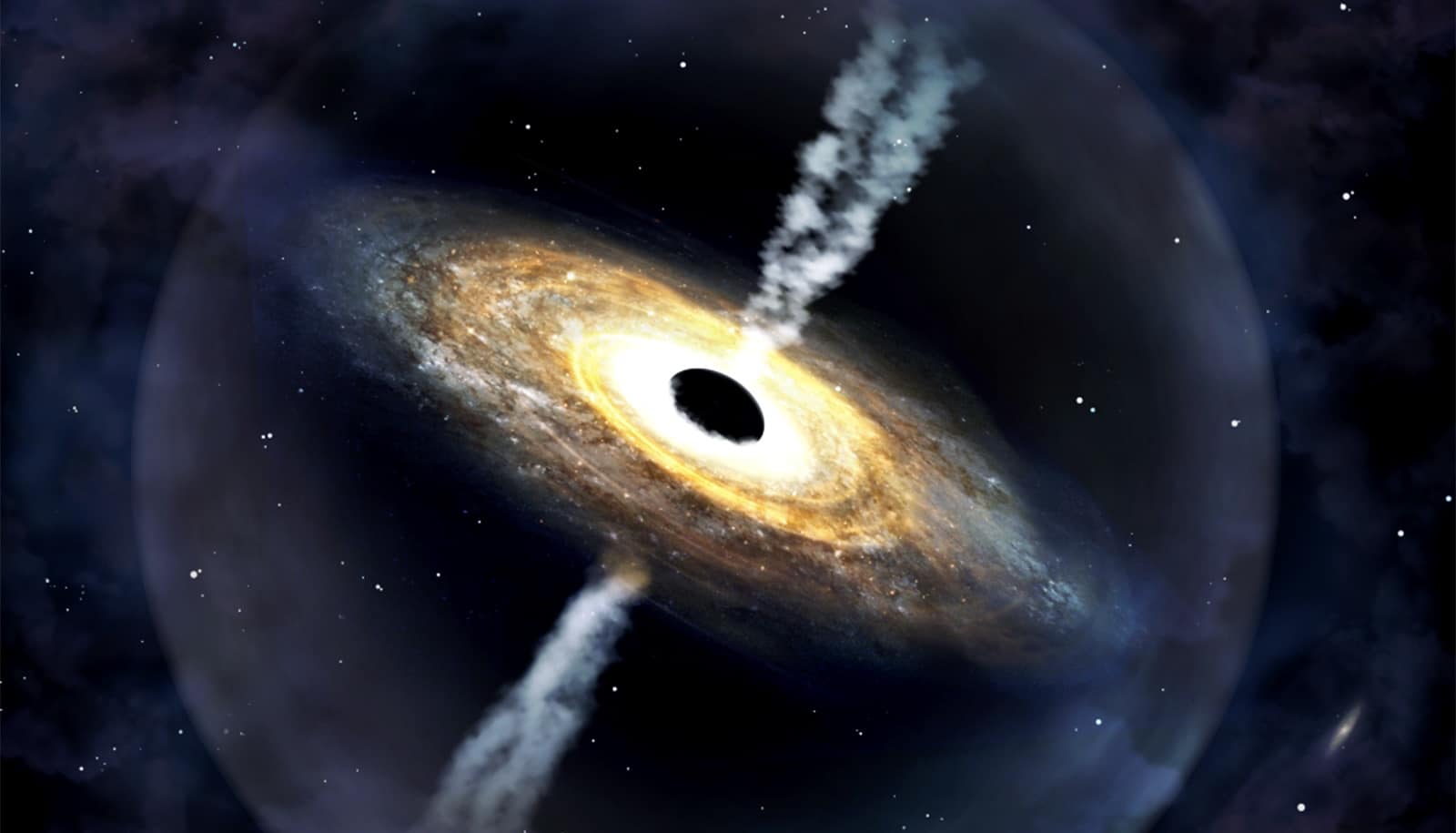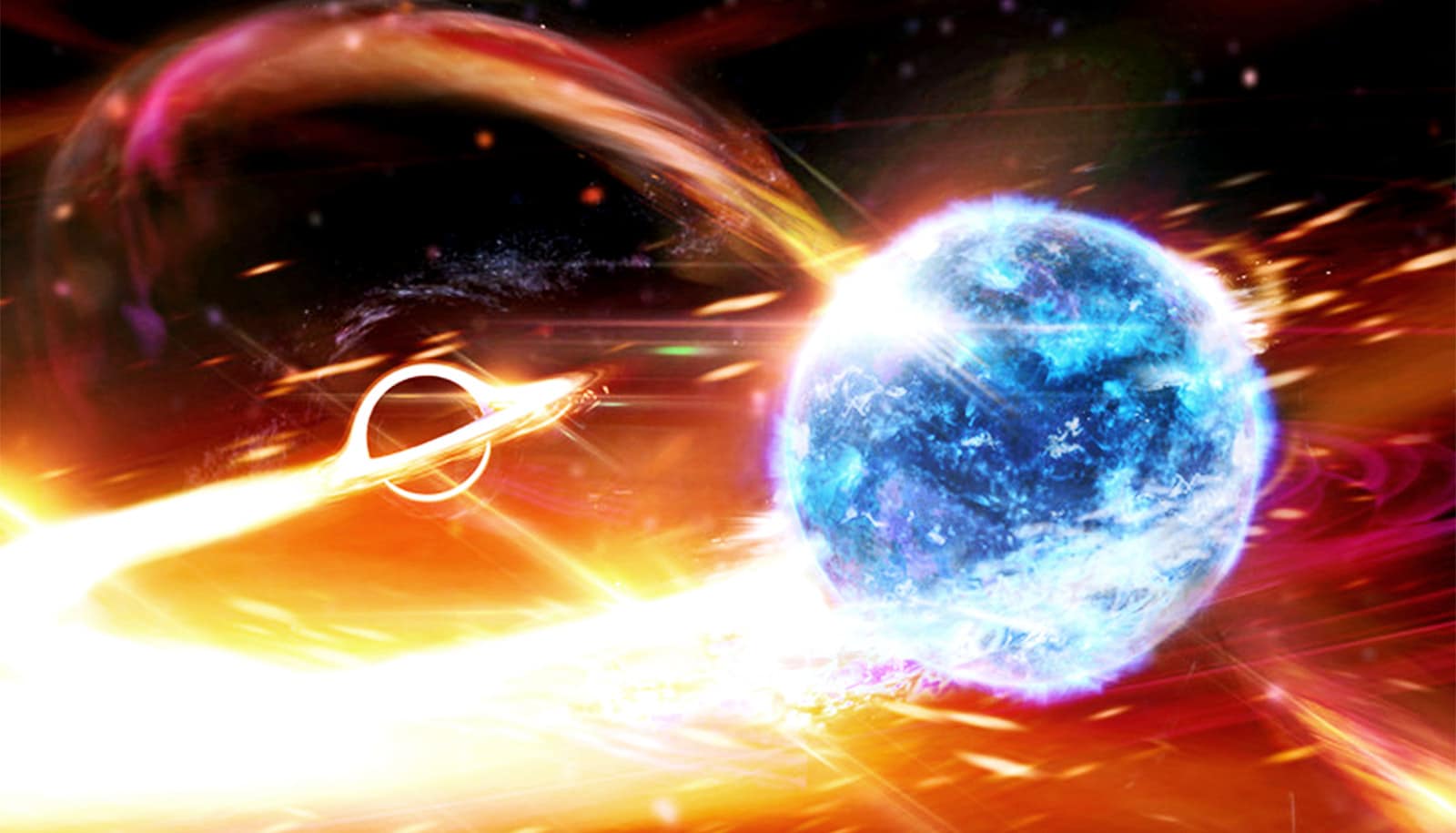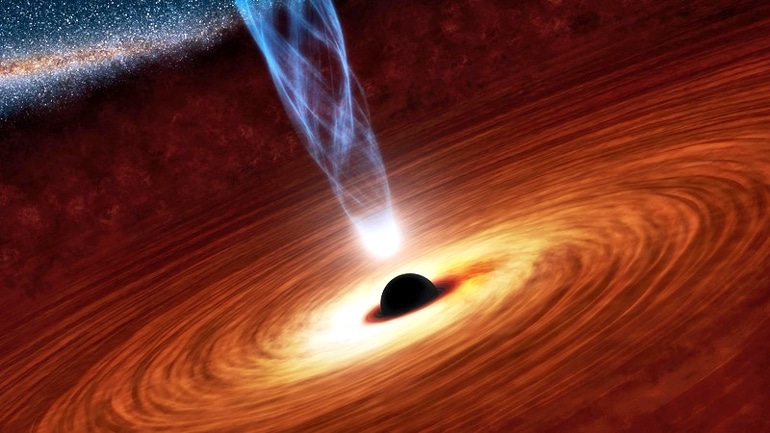The recent discovery of the second-most distant quasar ever found, at more than 13 billion lightyears from Earth, shakes up our understanding of black hole growth, researchers say.
Often described as “cosmic lighthouses,” quasars are luminous beacons that can be observed at the outskirts of the universe, providing a rich topic of study for astronomers and cosmologists.
“Pōniuāʻena is the most distant object known in the universe hosting a black hole exceeding one billion solar masses.”
The researchers have named the object Pōniuāʻena, which means “unseen spinning source of creation, surrounded with brilliance” in the Hawaiian language. It is the first quasar to receive an Indigenous Hawaiian name.
Quasars are incredibly bright sources of radiation that lie at the centers of distant massive galaxies. Matter spiraling onto a supermassive black hole generates tremendous amounts of heat making it glow at ultraviolet and optical wavelengths.
The results will appear in The Astrophysical Journal Letters.
“They are the most luminous objects in the universe,” says Joe Hennawi, a professor in the physics department at the University of California, Santa Barbara, “outshining their host galaxies by factors of more than a hundred.”
Since the discovery of the first quasar, astronomers have been keen to determine when they first appeared in our cosmic history. By systematically searching for these rare objects in wide-area sky surveys, astronomers discovered the most distant quasar (named J1342+0928) in 2018 and now the second-most distant, Pōniuāʻena (or J1007+2115).
The team first detected Pōniuāʻena as a possible quasar after combing through large area surveys. In 2019, the researchers observed the object using the WM Keck Observatory and Gemini Observatory on Mauna Kea, in Hawaii, confirming its existence and identity.
Pōniuāʻena is only the second quasar yet detected at a distance calculated at a cosmological redshift greater than 7.5, or 13 billion light years from Earth.
It hosts a black hole twice as large as the other quasar known from the same era. The existence of these massive black holes at such early times challenges current theories of how supermassive black holes formed and grew in the young universe.
A cosmological puzzle
Spectroscopic observations from Gemini and Keck show the black hole powering Pōniuāʻena is 1.5 billion times more massive than our sun.
“Pōniuāʻena is the most distant object known in the universe hosting a black hole exceeding one billion solar masses,” says lead author Jinyi Yang, a postdoctoral research associate at the University of Arizona.
Black holes grow by accreting matter. In the standard picture, supermassive black holes grow from a much smaller “seed” black hole, which could have been the remnant of a massive star that died.
“So it is puzzling how such a massive black hole can exist so early in the universe’s history because there does not appear to be enough time for them to grow given our current understanding,” says postdoctoral scholar Frederick Davies.
For a black hole of this size to form this early in the universe, it would need to start as a 10,000-solar-mass seed black hole only 100 million years after the Big Bang—as opposed to growing from a much smaller black hole formed by the collapse of a single star.
“How can the universe produce such a massive black hole so early in its history?” says Xiaohui Fan of the University of Arizona. “This discovery presents the biggest challenge yet for the theory of black hole formation and growth in the early universe.”
The discovery of a more exotic mechanism to form the seed black hole may be required to explain the mere existence of Pōniuāʻena.
The rise of giant black holes
Current theory holds that the birth of stars and galaxies as we know them started during the Epoch of Reionization. Beginning about 400 million years after the Big Bang, the diffuse matter in between galaxies went from being neutral hydrogen to ionized hydrogen. The growth of the first giant black holes is thought to have occurred during this time.
The discovery of quasars like Pōniuāʻena, deep in the reionization epoch, is a big step towards understanding this process of reionization and the formation of early supermassive black holes and massive galaxies. Pōniuāʻena has placed new and important constraints on the evolution of the intergalactic medium in the reionization epoch.
“Pōniuāʻena acts like a cosmic lighthouse. As its light travels the long journey towards Earth, its spectrum is altered by diffuse gas in the intergalactic medium which allowed us to pinpoint when the Epoch of Reionization occurred,” says Hennawi. The modeling and data analysis method used to infer information about the Epoch of Reionization from these distant quasar spectra was developed in his research group at UC Santa Barbara with Davies and Wang.
“Through University of California Observatories, we have privileged access to the Keck telescopes on the summit of Mauna Kea, which allowed us to obtain high quality data on this object shortly after it was discovered using the Gemini telescope,” Hennawi says.
Finding these distant quasars is a needle in a haystack problem. Astronomers must mine digital images of billions of celestial objects in order to find quasar candidates. “Even after you identify the candidates, the current success rate of finding them is about 1%, and this involves spending lots of expensive telescope time observing contaminants,” Wang explains.
Fortunately, Hennawi and his group are developing machine learning tools to analyze this big data and make the process of finding distant quasars more efficient.
“In the coming years the European Space Agency’s Euclid satellite and NASA’s James Webb Space Telescope will enable us to find perhaps a hundred quasars at this distance, or farther,” he says.
“With a large statistical sample of these objects we will be able to construct a precise timeline of the reionization epoch as well as shed more light on the black hole growth puzzle.”
Source: UC Santa Barbara



